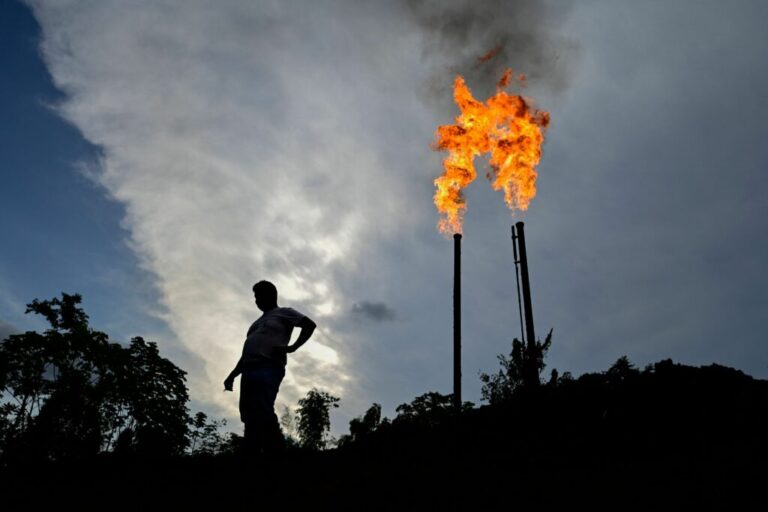Australian Stock Exchange-listed Invictus Energy has announced a major gas discovery in Mukuyu in northern Zimbabwe, which it says represents one of the most significant developments in the southern African country’s oil and gas sector.
The country’s newly-appointed Minister of Mines and Mining Development, Soda Zhemu, hailed the discovery for its potential to positively impact the economy and diversify Zimbabwe’s energy mix.
ADVERTISEMENT
CONTINUE READING BELOW
The Zimbabwean government and Invictus emphasised that the discovery has yet to be confirmed through ongoing tests and exploration.
Four hydrocarbon samples were recovered from the Mukuyu-2 well, confirming earlier discoveries at the Mukuyu-1 well seven kilometres away.
The latest discovery “provides confirmation of the large potential of the Mukuyu field which has a structural closure of over 200km²,” Invictus MD Scott Macmillan said in a statement. More drilling is required to prove the extent of the discovery further.
Potential market
Invictus is opening one of the last untested large frontier rift basins in onshore Africa – the Cabora Bassa Basin – in northern Zimbabwe through a high-impact exploration programme.
Given its deep inland location in Zimbabwe, the gas may supply mining customers in Zambia and perhaps Tanzania via piped and small-scale liquefied natural gas (SSLNG). Another obvious market is for domestic customers and electricity generation.
Bloomberg reported that Exxon, formerly Mobil Oil Corp, abandoned exploration in Zimbabwe in the 1990s after concluding that any discoveries were more likely to hold gas than oil. Invictus used this data and vastly increased its exploration licence area.
Read:
Update: Kinetiko Energy makes huge gas discovery near Secunda
Kinetiko Energy’s gas find a big boon for energy-hungry SA
Paul Eardley-Taylor, gas sub-sector lead for Standard Bank, says the Invictus discovery in Zimbabwe is encouraging but needs further development.
“It’s early days yet. Invictus will need to undertake more exploration and appraisal wells and flow tests. I suspect by the end of 2024 we will have a better feel for the size and quality of the discovery.
“What is positive for Zimbabwe and the region is that the global coal-to-gas switch is gaining momentum as a way to reduce carbon emissions and meet the energy needs of customers.”
African gas producers
A Standard Bank document entitled South African Gas Optionality published this month notes that Africa accounts for 7% of global proven natural gas reserves, a figure that is on the rise.
“Since 2000, the gas output volume in Africa has increased by over 70%. In coming years, it is likely that [a] record annual growth rate in production of around 3% could be reached on the continent, increasing from around 230 billion cubic metres (bcm) in 2020 to about 520 bcm in 2050,” says the study.
Algeria, Egypt and Nigeria accounted for more than 80% of Africa’s gas production in 2020, but this is likely to change going forward, particularly with new natural gas developments in Mozambique.
Read: Africa needs faster development of gas and renewables, PwC says
Mozambique is now the continent’s third-largest source of gas reserves and has emerged as a major player in the global liquefied natural gas (LNG) sector. Standard Bank says Mozambique should become the dominant provider of LNG for eastern and southern Africa. “The Covid-delayed African Continental Free Trade Area (AfCFTA) is intended to boost pan-African trade. SSLNG is a natural launch product for African countries to trade in.”
Getting gas from offshore developments in Mozambique, Tanzania, Namibia, and Angola will require major investment in gas pipelines to the hinterland.
ADVERTISEMENT
CONTINUE READING BELOW
Several such projects are currently under consideration, linking Dar es Salaam to Ndola in Zambia and Lobito in Angola to Lusaka. A third potential gas pipeline linking Walvis Bay in Namibia to Lusaka is also under consideration.
Tanzania is also on track to become a strong gas producer and exporter via the Tanzania LNG project, which is currently in the planning stage.
What about SA?
While much of the discussion around South Africa’s energy needs has centred on Eskom, gas only accounts for about 31% of the country’s energy needs. SA currently consumes 180 petajoules (PJ/a) of gas, with a further 70 PJ/a used as feedstock for the PetroSA GTL refinery until production ceased (one petajoule is equal to 31.6 million cubic metres of natural gas).
Read: SA picks Russia’s Gazprombank as PetroSA refinery partner
“Natural gas production, and/or imports, should not only be viewed as a potential fuel source for electricity generation, but as part of a wider contribution to the energy demand of the country. This is not the case for renewable energy, which has a sole purpose of electricity generation,” says Standard Bank.
Eskom currently has several natural gas initiatives underway or planned, including a 3 000 megawatt (MW) combined cycle gas turbine power plant in Richards Bay to introduce local generation in KwaZulu-Natal and reduce transmission losses from other parts of the country.
Read:
Government wants oil and gas exploration accelerated
‘SA can become an oil and gas exporter’ – CEF chair
Gas crunch threatens to deepen SA’s economic crisis
The Integrated Resource Plan (IRP2019) references 3 000MW of new gas and diesel generation capacity to come online between 2014 and 2019. Transnet currently has a tender out for an LNG terminal operator in Richards Bay, and three further projects totalling 1 220MW were awarded to Karpowership to operate at Coega, Richards Bay, and Saldanha. Several Eskom coal-fired power stations could switch to natural gas as a source of energy.
Standard Bank says several open-cycle gas turbines currently operating on diesel could likewise be switched to natural gas without upgrading the Eskom distribution grid.
Listen to this Special Report podcast with Moneyweb editor Ryk van Niekerk (or read the transcript here):
You can also listen to this podcast on iono.fm here.
Download the free LiSTN audio app on Google Play, Apple or here.

